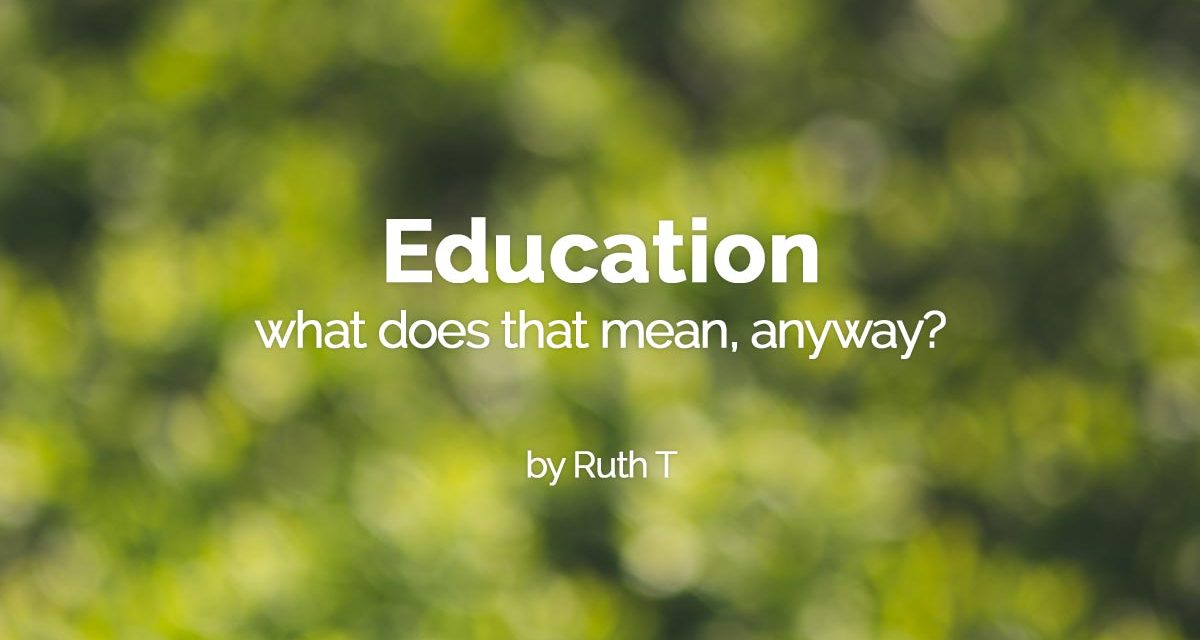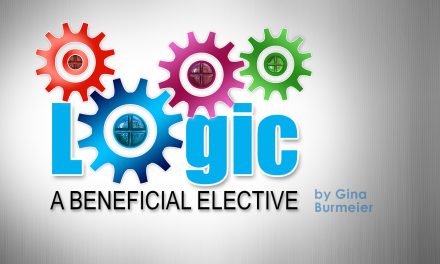Child: What does that mean?
Me: I just told you what that means.
Child: But what does it mean?
Me: Didn’t you… hear… the words… coming out of my mouth? (accentuated with elaborate hand gestures)
Child: Yes…But what do they mean?
…And so ended a few conversations in our home. I hope you haven’t played out this same scenario. Obviously, somewhere along the line, my educational process with “that” failed.
Granted, we don’t live in a perfect world where everything is perfectly taught and willingly or easily absorbed by our students. However, in reviewing my home school, I’ve found that sometimes we skipped a step or we may have not spent enough valuable time in important steps of the educating process.
What does it mean to educate your children? How do knowledge and skills become part of a student and become truly theirs? How do you know if your curriculum is thorough and if you’ve taken all the steps?
To truly learn something requires working through four steps that can be described by using the acronym TEAM: Teach; Engage; Assess; and Master. These steps can be linear but often the teacher and student may cycle back on the different steps as needed.
The foundation for the whole process is Teach. Your first reaction may be like mine: “Duh!” Of course you have to teach! But let’s spend some time here. To teach someone requires much more than just presenting information. This foundational step is where concepts and skills are demonstrated, terms and contexts are explained, etc. The curriculum and your teaching need to actually instruct. Is there enough instruction for the student to actually learn? Knowledge can be passed on using various methods, but it must be in ways that the learner can receive and understand. (My earlier conversation is an example of when the “arrow missed the mark.”) Understanding your students’ knowledge base, comprehension level and learning styles are key in this stage. Do your methods and your curricula present ideas in thorough, comprehensible methods appropriate for your student?
During the Teach stage, the learner’s role can appear more passive. However, during the Engage step, the learner assumes a more active role, personally applying and practicing what he is learning. The student takes the next step from hearing, seeing and absorbing. As ancient philosopher Xun Kuang said, “Knowing is not as good as acting and learning continues until it is put in action.” Different curricula offer different ways of engaging with the material: dictating, creating, writing, completing exercises, reading, etc. For example, if a student was taught how to carry the tens in multiplication, this stage is when he would practice. Your curriculum should provide these opportunities. However, supplements, by their very nature, assume prior knowledge and emphasize only portions of TEAM. So at this stage, supplements can come in handy, providing extra practice. The Engage step is crucial because the learner processes what has been taught.
As your student learns and practices, you will need to Assess progress. This stage gives you and your student a more tangible perspective on the learning and where more work might need to be done. As homeschoolers, you have intimate opportunities to daily evaluate progress. As you assess, you may find it necessary to revisit the Teach or Engage stages and, potentially, to reassess as well. Revisiting is not failure! Especially with foundational skills, it can be imperative! With assessing, we typically think of the traditional quizzes, tests, reviews, etc. There are other ways to check how much your child is grasping and absorbing. Have your students create visual, writing, oral and dramatic projects or use checklists to evaluate, etc. Your curriculum should provide assessment methods, but select those that will best evaluate your student’s progress.
Effective curricula include all three of these first three steps. But the Master stage is where the “rubber meets the road”. Our goal is that the knowledge and skills become a part of the student’s toolbox—a part of themselves. We can’t assume that this melding just naturally occurs at the end of the chapter or after a test. Learners need additional opportunities to practice and reinforce skills learned. In doing so, they’ll have a more solid base upon which to build. Periodically reviewing facts and skills helps ensure you aren’t building a shaky foundation. Supplements can also be helpful during the Master stage. Can your students naturally demonstrate key points from last semester? Apply their learning to different situations? Teach this skill to another? This level of mastery takes time, consideration and review.
Remember teaching is a team effort: teacher and learner, parent and child, tools and execution. Let’s help our students obtain the right tools and be able to use them—all the while doing so ourselves along the way.





